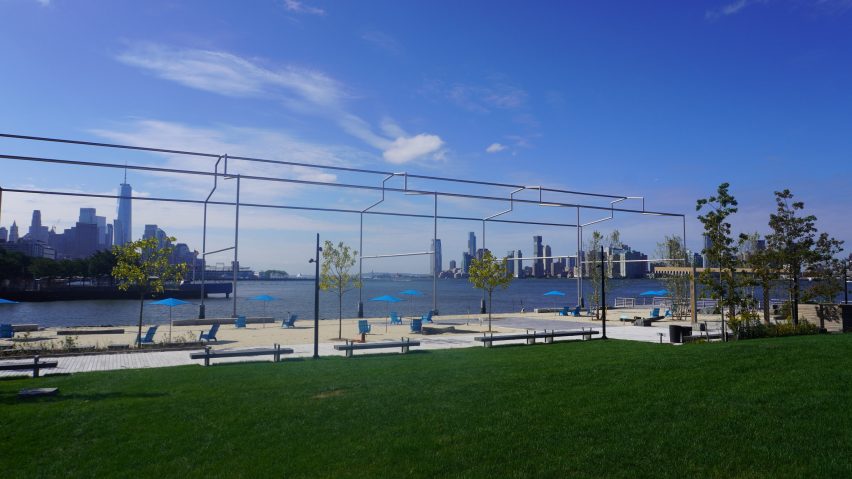
Field Operations' Gansevoort Peninsula designed to "help prepare" New York for climate change
Manhattan's first "public beachfront" and a salt marsh feature at Gansevoort Peninsula on the Hudson River, which was designed by local landscape studio Field Operations to serve as a buffer against rising tides.
Gansevoort Peninsula sits on the Hudson River on the site of a former pier and is part of a greater initiative known as the Hudson River Park, the result of the conversion of industrial spaces on Manhattan's waterfront into public parks and ecological conservation zones.
Field Operations – formerly called James Corner Field Operations – transformed the former pier into 5.5 acres of public space including a playing field, promenades and improvements to the coastline including a salt marsh and oyster habitat.
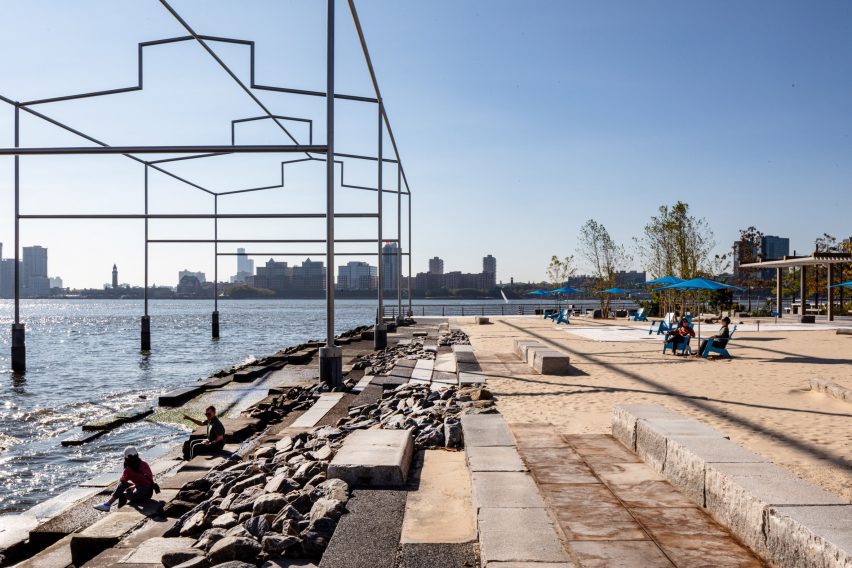
These ecological interventions were created to make the waterfront resilient to changing water conditions with global climate change.
To accomplish this, Field Operations utilised wood piles that had accumulated around the Gansevoort Penisula to anchor the salt marsh and habitats. The team also included soft edges to the north and south of the project that allow for tidal pools.
The studio said that these moves support "native intertidal habitat that previously was displaced in the Hudson River".
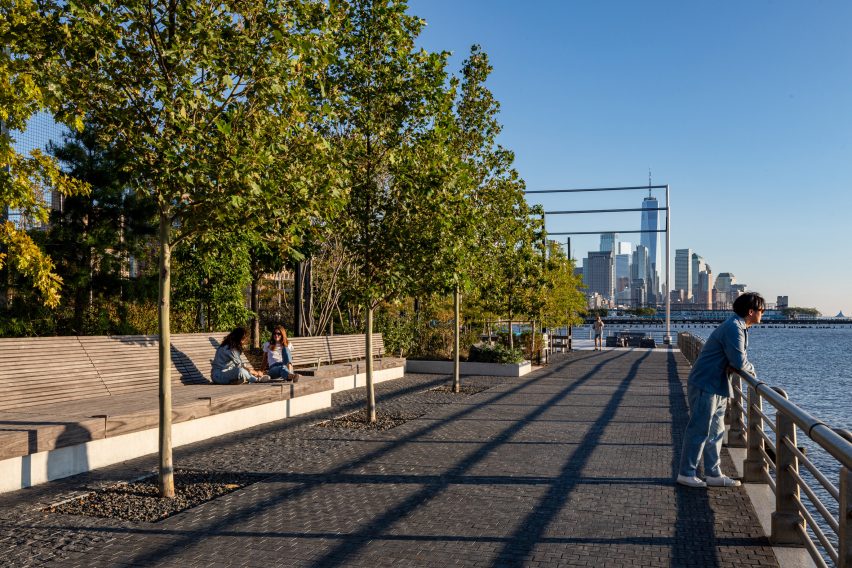
City officials lauded the project's gestures towards climate resilience.
"Gansevoort Peninsula is a true green space for the 21st century, incorporating innovative design and helping to prepare the west side of Manhattan for climate change," said New York City mayor Eric Adams on the opening of the park last week.
"Our administration is working to provide open space in every community and expand access to public parks in all five boroughs."
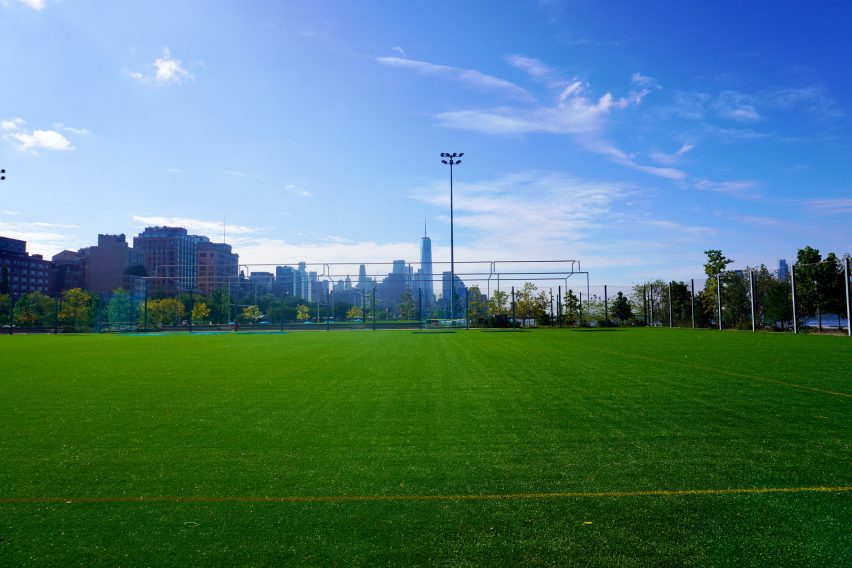
The site was once a landfill and sanitation site to facilitate the expansion of Manhattan, which accounts for the wideness of the site compared to some of the adjacent piers.
The south side of the park holds the "public beachfront", which was filled in with 1,200 tonnes of sand and dotted with beach umbrellas and Adirondack chairs. However, the Hudson River Park Trust, which manages this and other parks on the river, was careful to note that people will not be allowed to swim in the water. Kayak launches are permitted.
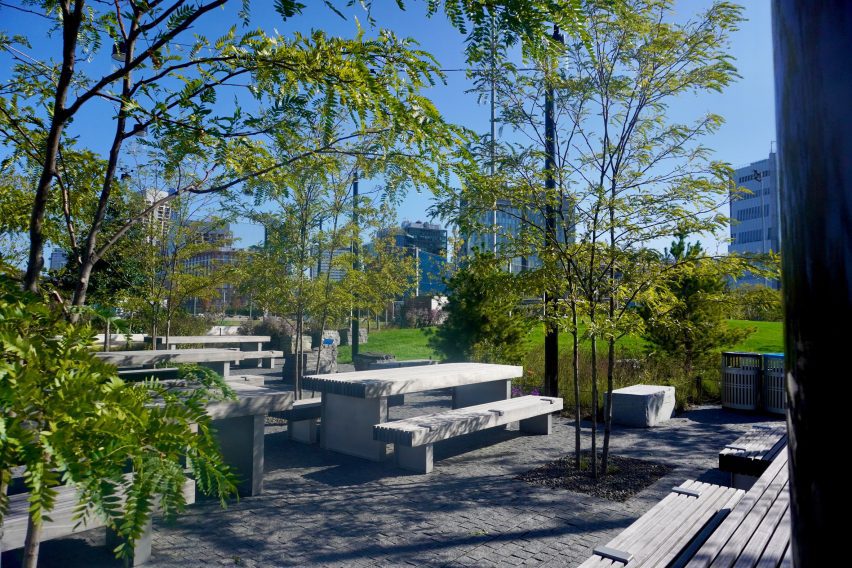
Also on the south side of the park is a large-scale, site-specific sculpture by David Hammons called Day's End, which was donated to the Gansevoort Penisula by the nearby Whitney Museum of American Art. The sculpture resembles the frame of a large industrial building and rises directly from the water near the shore.
At the centre of the project is a large lawn and sports field with a rest facility being completed by local studio nARCHITECTS.
"Inspired by community input, Gansevoort Peninsula is a place for respite, relaxation, exploration, sports, and play," said Field Operations partner Lisa Switkin.
"A defining characteristic is how the design embraces each side of the peninsula, offering new ways to engage with the Hudson River, with diverse and varied edges that elongate the transition from land to water," she continued.
Though the area is now mostly public, a division of New York City's Fire Department's marine division will maintain facilities on a pier that juts from the north of the site.
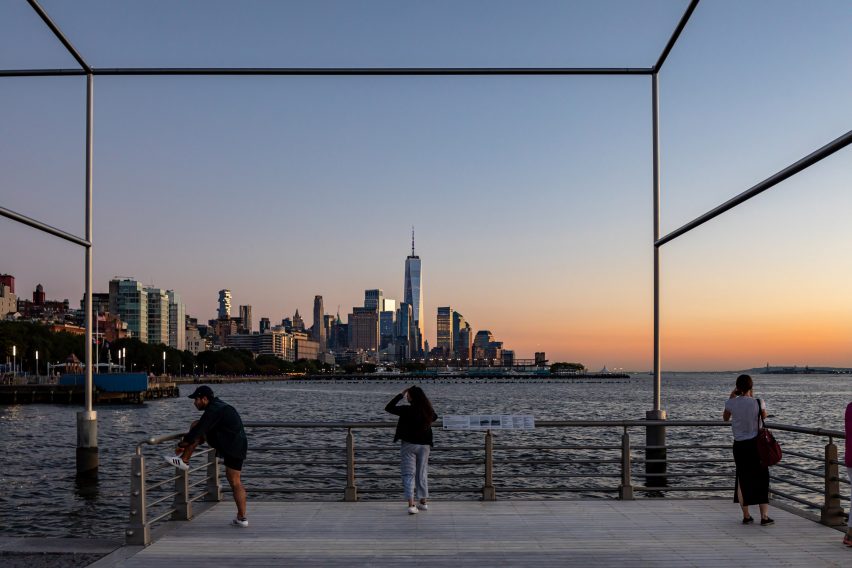
Gansevoort Penisula has connections to a strip of trails that connects a series of parks and recreation centres along the Hudson River, from Tribeca to the Upper West Side.
Just north of Gansevoort is Little Island, a park created on concrete pylons by British architect Thomas Heatherwick. According to the city, the Hudson River Park is nearing completion after more than 25 years of work.
Field Operations has been essential to the revitalization of industrial spaces on the city's West Side, playing a central role in the High Line elevated park. The studio also has played a role on the East River waterfront in Brooklyn, creating a series of landscaped spaces at the Domino Refinery site.
The photography is by Barrett Doherty, courtesy of the Hudson River Park Trust.